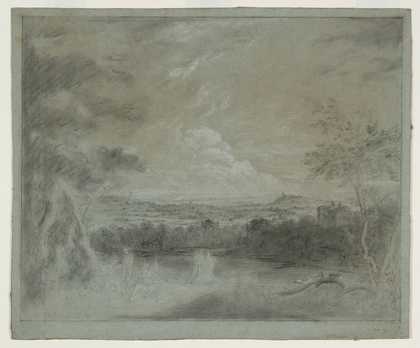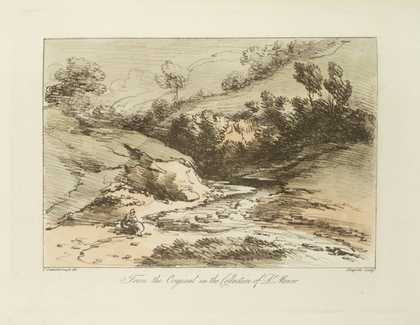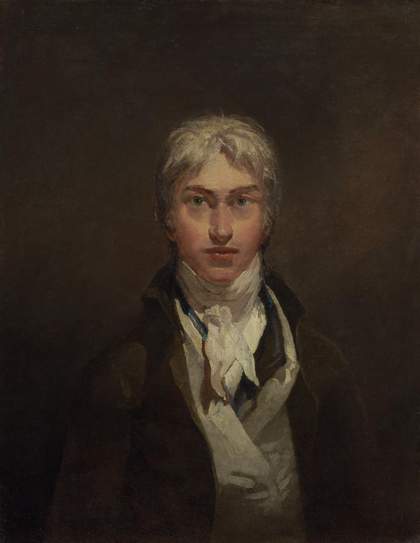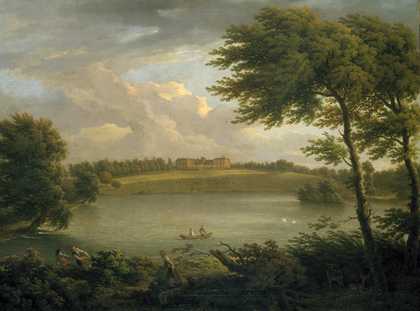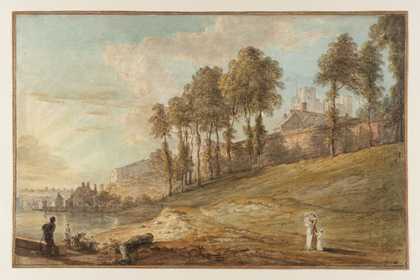
Richard Wilson
On Hounslow Heath (?exhibited 1770)
Tate
Richard Wilson was not only a very great artist, but he may justly claim priority in time in the creation of the British School of landscape painting. It is not improbable that the arrival of Canaletto in England in 1746 gave an impetus to the native painters of modest topographical views. It is at least remarkable that Wilson produced a picture of some importance and size, View of Dover, the next year, and three years later set off to see Venice and Rome for himself.
In the present exhibition a special effort had been made to show some of Wilson’s English and Welsh subjects, as these were less well-known than his Italian scenes with their yellow skies and more conventional composition, which Wilson repeated again and again in many replicas.
A few works by Wilson’s contemporaries, such as George Lambert and Paul Sandby and by his pupils such as J. Farington, T. Jones and R. Crone were included, and some of the copies and imitations of Wilson by Turner and Crome, for comparison with Wilson’s own works.
Wilson, born in 1714, was a mature artist when Gainsborough, born in 1727, was still practising portrait painting at Ipswich, and Wilson may fairly claim the honour of being ‘the father of British landscape’ for Crome and Turner frankly copied Wilson, and for a time modelled their work on his; the small Landscape with Quarry anticipates one side of Crome.
Wilson’s contemporary, Hoppner, said of him: ‘We recollect no painter, who, with so much originality of manner, united such truth and grandeur of expression’; and his pupil, Joseph Farington, in comparing him with Claude, gave preference to ‘the largeness and dignity of Wilson’s mind’ and there is an absence in Wilson’s work of that artificiality that sometimes accompanied Claude’s preoccupation with light. The estimation of Richard Wilson’s art has been curiously incorrect; it has been generally taken for granted that, beginning as a second-rate portrait painter, his visit to Italy in 1749 and the generous admiration and the advice of Zuccarelli and C. J. Vernet created, almost miraculously, an accomplished painter of classical landscapes.
Wilson had a fine sense of colour and he brought from classic art the qualities of selection, simplification and balanced composition, which Dutch art could not supply; while from Claude he caught poetic serenity and a liquid atmospheric quality, to which his own instinct for solid design and rich quality of pigment gave added strength.
Amongst the most exquisite add personal achievements of Wilson may be mentioned; The Quarry, Hounslow Heath, The Summit of Cader Idris, and Snowdon.
While some of his too often repeated Italian compositions reveal traces of convention and artifice, in these works Wilson save the world something unique and exquisite, the quality of the rich tone and of the fat pigment of the paint perfectly corresponding with and expressing his noble mood of imagination and meditation.

